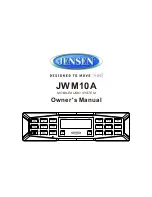
NI USB-6008/6009 User Guide and Specifications
12
ni.com
Floating Signal Sources
A floating signal source is not connected to the building ground system, but has an isolated
ground-reference point. Some examples of floating signal sources are outputs of transformers,
thermocouples, battery-powered devices, optical isolators, and isolation amplifiers. An instrument or
device that has an isolated output is a floating signal source.
Refer to the NI Developer Zone document,
Field Wiring and Noise Considerations for Analog Signals
,
for more information. To access this document, go to
ni.com/info
and enter the Info Code
rdfwn3
.
When to Use Differential Connections with Floating Signal Sources
Use DIFF input connections for any channel that meets any of the following conditions:
•
Your application requires input ranges other than ±10 V.
•
The input signal is low level and requires greater accuracy.
•
The leads connecting the signal to the device are greater than 3 m (10 ft).
•
The input signal requires a separate ground-reference point or return signal.
Table 6.
Analog Input Configurations
Analog Input Mode
Floating Signal Sources
(Not Connected to Building Ground)
Ground-Referenced Signal Sources
Examples:
•
Ungrounded thermocouples
•
Signal conditioning with isolated
outputs
•
Battery devices
Example:
•
Plug-in instruments with
non-isolated outputs
Differential (DIFF)
Referenced
Single-Ended (RSE)
+
–
+
–
AI+
AI–
GND
Signal Source
NI USB-6008/6009
+
–
+
–
AI+
AI–
GND
Signal Source
NI USB-6008/6009
+
–
+
–
AI
GND
Signal Source
NI USB-6008/6009
Ground-loop potential (V
A
– V
B
) are added
to measured signal.
NOT RECOMMENDED
+
–
+
–
AI
GND
V
B
V
A
Signal Source
NI USB-6008/6009













































